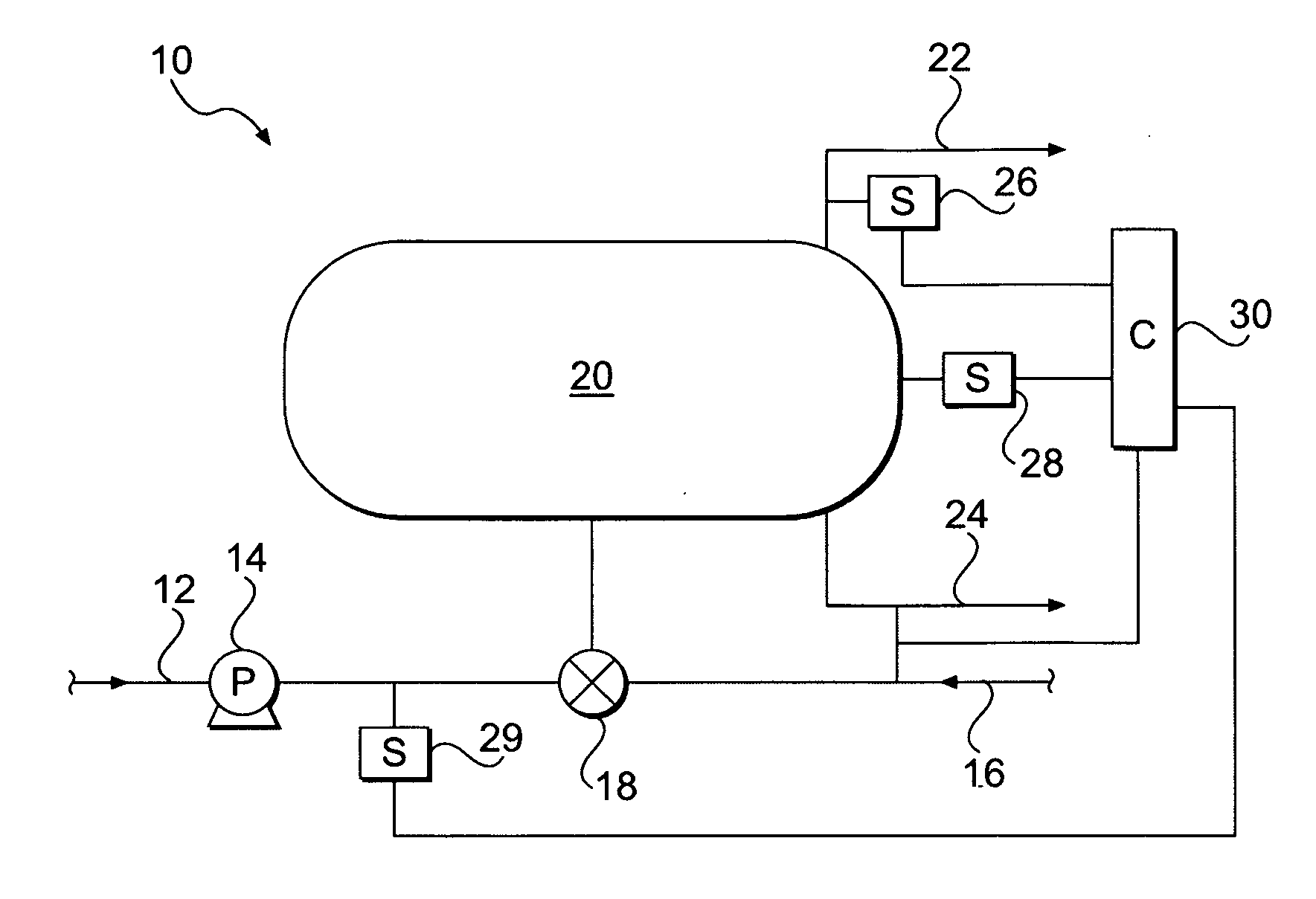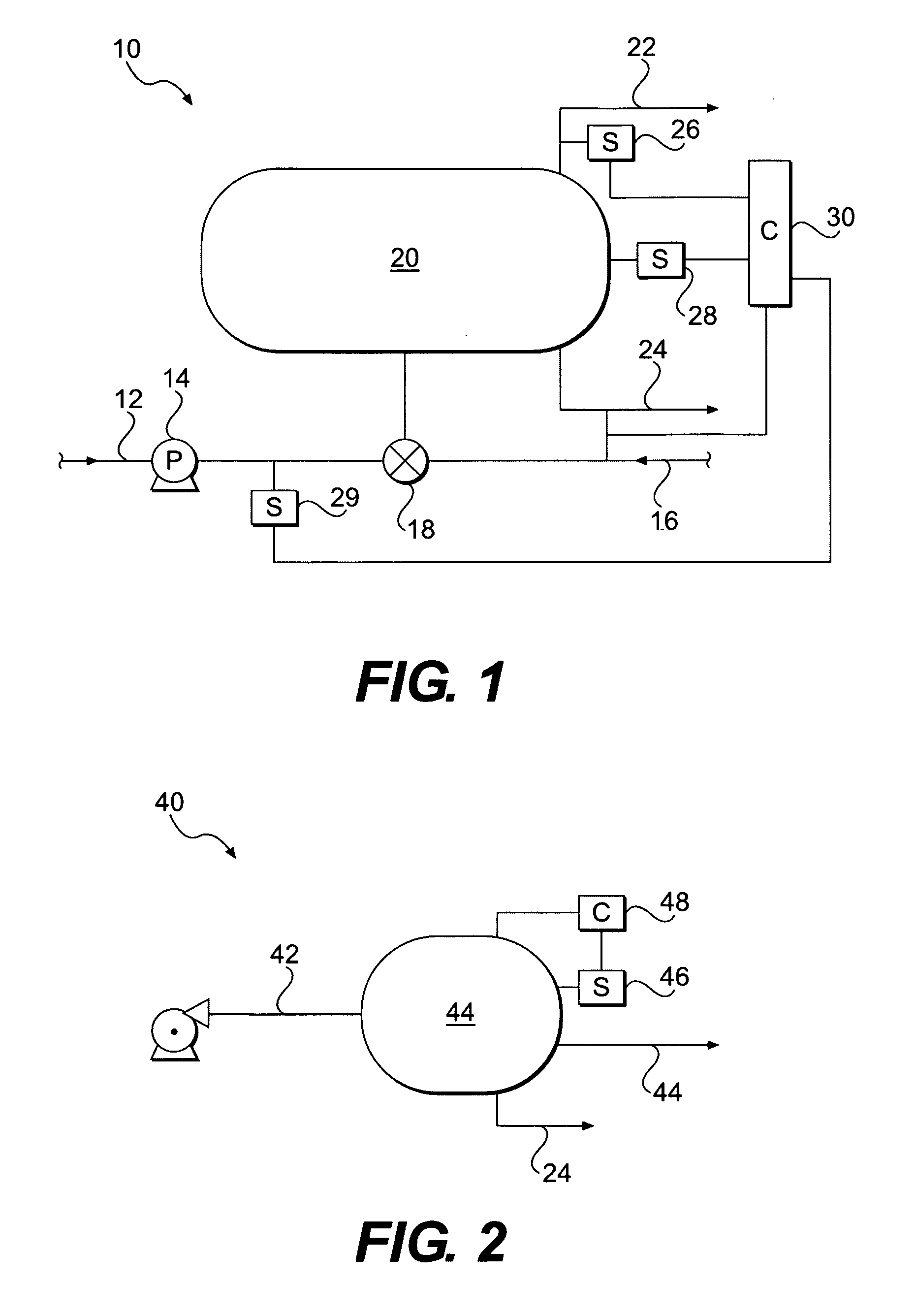Focused beam reflectance measurement to optimize desalter performance and reduce downstream fouling
- Summary
- Abstract
- Description
- Claims
- Application Information
AI Technical Summary
Benefits of technology
Problems solved by technology
Method used
Image
Examples
experiment 1
[0048
[0049]To demonstrate that fine solid particles at the 50 wppm concentration level in crude oil can be detected, an experiment using the Lasentec® FBRM® was used. Two hundred mls of whole crude oil was poured into a glass beaker. This beaker was then positioned in the Lasentec® fixed beaker stand that holds the Lasentec® probe in an optimal position within the beaker in relation to a variable speed, four blade propeller stirrer that circulates the test solution past the probe window. The measurements were conducted at ambient temperature. After an initial total particle count was obtained with the instrument, data collection was halted. Then, about 10 mgs of iron oxide powder (Aldrich, 2=0.998.
experiment 2
[0050
[0051]A second experiment was conducted to demonstrate that brine dispersed in crude oil can be detected. The experiment used the Lasentec® FBRM® with the same experimental set up and procedure as in the first experiment, described above, except that aliquots of a 20 weight % sodium chloride in water solution was added rather than the addition of aliquots of solid iron oxide. The first addition represented 0.1 volume %, and no change in total particle counts was recorded. For the FBRM®, “particles” can be solid particles, gas bubbles, or dispersed second liquid phases, such as brine droplets, as in this case. Upon addition of 1 volume % of brine, a significant jump in signal was observed. Additional increases of 2 volume % and 5 volume % also produced increases in particle counts, but not in a linear fashion, as in the first experiment. This may be due to the unstable nature of the dispersion that is produced by the addition of brine droplets, as brine droplets will coalesce wi...
experiment 3
[0052
[0053]In a third experiment, the FBRM® probe was used to detect the formation of asphaltenes during the course of the blending of two incompatible crude oils. Initially, 250 mls of a crude oil was stirred at room temperature, and the probe was used to measure the background particle content. At room temperature, wax crystallites in the crude oil were evident by eye and produced a noisy baseline to the FBRM®, as seen in FIG. 6. After an addition of 150 mls of n-heptane, most of the wax crystals appeared to dissolve, and the total particle count dropped to a steady low level. Upon addition of 50 mls more of heptane, the particle count increased dramatically. Initially, this growth was limited to the smaller particles in the 0.8 and 5.5 micron chord length range. Then, the particles grew progressively larger. As indicated in FIG. 6, the Lasentec® FBRM® was used to detect the “titration-like” response at the point of asphaltene phase separation. The absence and presence of asphalte...
PUM
 Login to View More
Login to View More Abstract
Description
Claims
Application Information
 Login to View More
Login to View More - R&D
- Intellectual Property
- Life Sciences
- Materials
- Tech Scout
- Unparalleled Data Quality
- Higher Quality Content
- 60% Fewer Hallucinations
Browse by: Latest US Patents, China's latest patents, Technical Efficacy Thesaurus, Application Domain, Technology Topic, Popular Technical Reports.
© 2025 PatSnap. All rights reserved.Legal|Privacy policy|Modern Slavery Act Transparency Statement|Sitemap|About US| Contact US: help@patsnap.com



